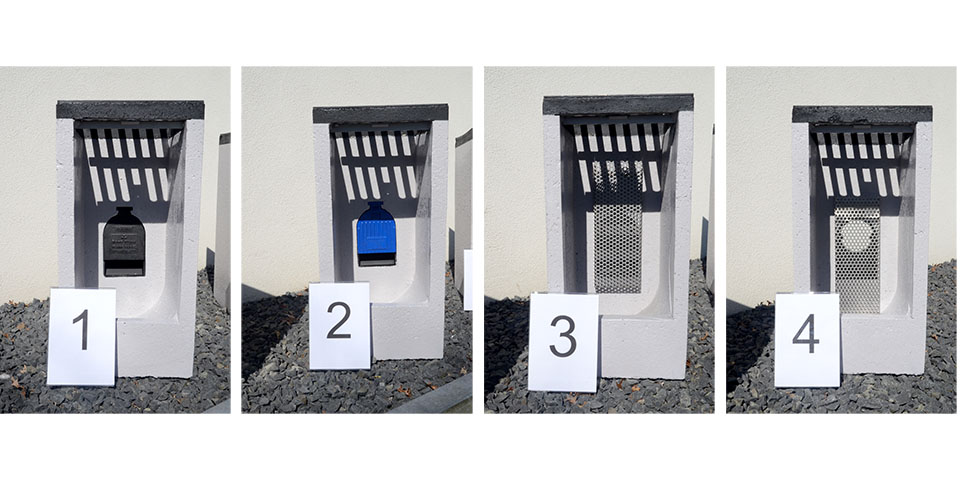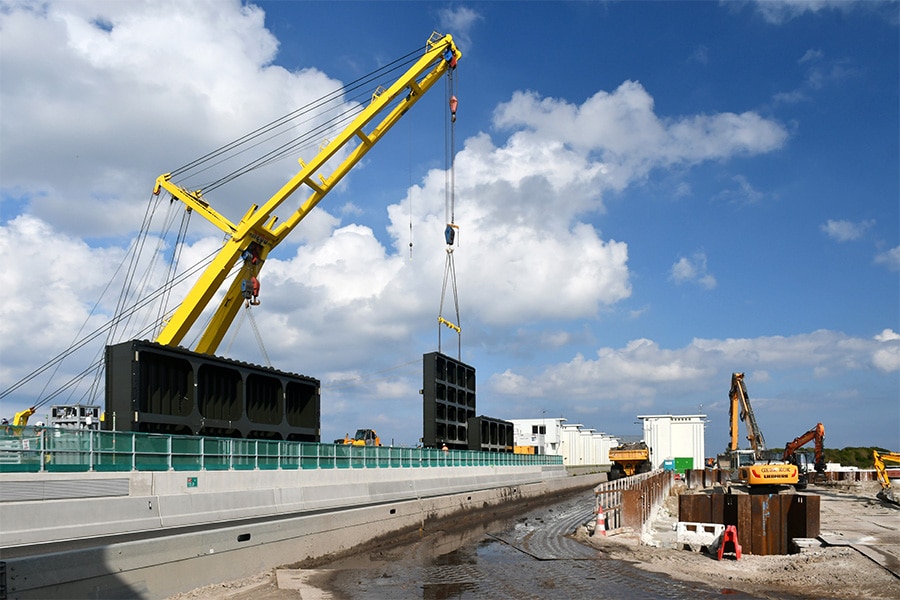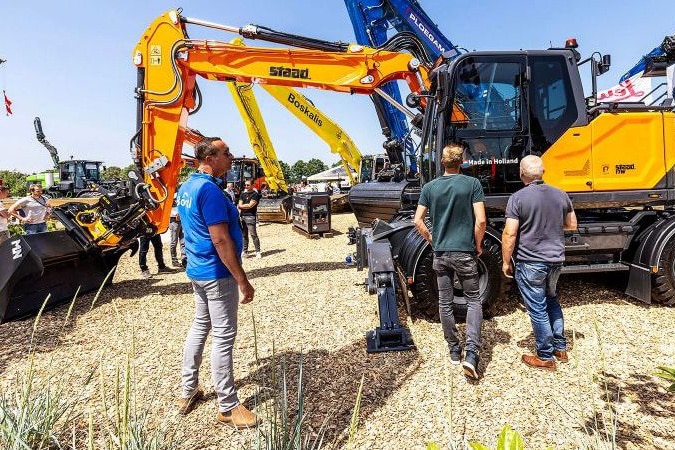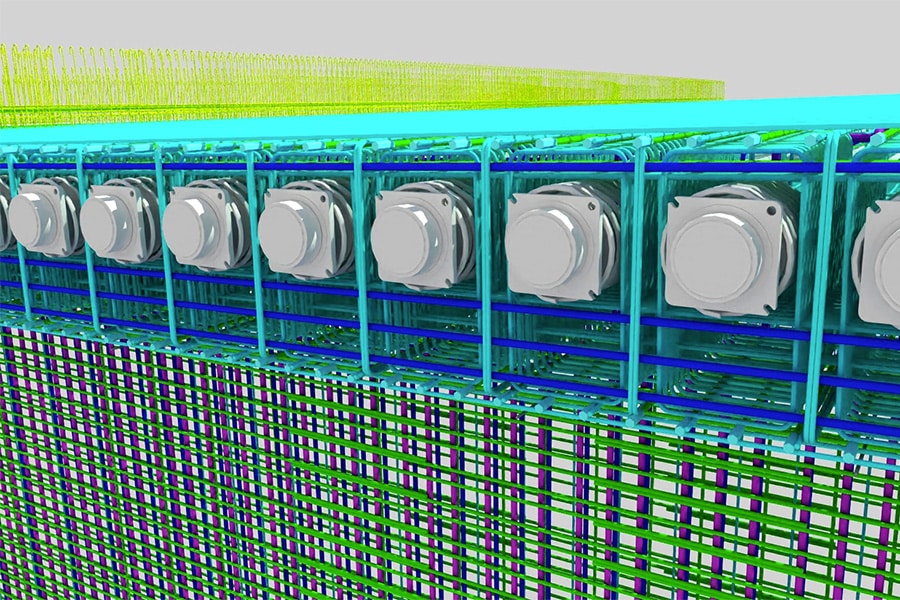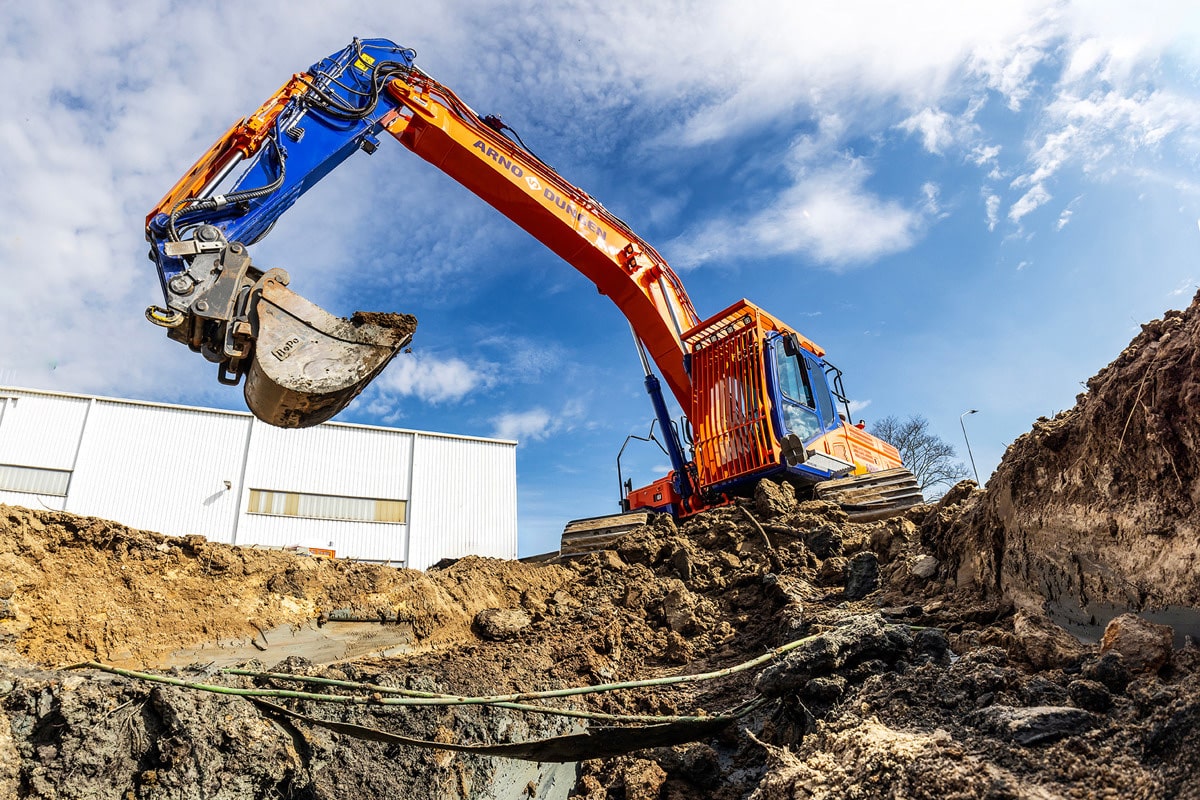
A solution that clicks with all gullies? It's here now!
Sewer cleaners all know the problem when they have to clean or unclog a gully: the odor screen in the gully will sometimes fall out of its attachment. It is difficult and time-consuming to replace the screen.
Nering Bögel developed a new valve that stays neatly in place. The "click valve" is not only innovative in application, during the design process Nering Bögel discovered that the needs of municipalities now go beyond having a good odor barrier.
1: A gully with a cast iron odor screen, the traditional gully.
2: A gully with the new click valve, new and suitable for the dirty water system.
3: The traditional gully with a cast iron odor screen, combined with the dirt trap.
4: A gully with dirt trap, without odor screen, good for the most optimal water drainage combined with preventing contamination of the underlying system.
Tank screen not desired everywhere
We speak with Toin Bongers, Operations Director and Henrie van Geneijgen, field sales representative at Nering Bögel. "Of course, the starting point for the design of the click valve was that it should not fall out of the gully," Van Geneijgen opens the conversation. "However, some municipalities told us that people actually only want a stench trap in places where it is actually relevant, for example, at gullies that discharge dirty or mixed water. In other places where there is no contact with the mixed or dirty water sewer, they prefer not to see a valve at all. There people prefer to opt for maximum throughput of water."
Bongers adds, "Especially when you go to connection diameter 160 you get maximum discharge capacity, necessary to cope with increasing flooding. A stench screen is then still a limiting factor in the discharge capacity." According to Bongers and Van Geneijgen, we need to better prepare gullies for peak loads. "It is true, however, that a lot of dirt ends up in a gully, such as leaves, twigs and street dirt. One would rather not have that dirt in the system behind it, especially if the gully leads to a vulnerable infiltration system," Van Geneijgen explains. "The desire is therefore to have a provision in the gully that retains the dirt in the gully. We already had such a provision at Nering Bögel, but always in combination with a odor screen. We have now solved that, by developing a dirt trap that we can attach in the chamber of the odor screen."
The ancient kolk is suddenly multifunctional
"By listening to the wishes of municipalities, we were not only able to work on a solution for an odor screen that stays neatly in place, but we were also able to meet the desire to keep all the dirt neatly in the gully," Bongers continued. "And the great thing is that the ancient gully has suddenly become multifunctional, because of all the options that are now available. We have created something simple, effective and unique. The choice now is: a gully with a cast iron odor screen, the traditional gully, a gully with the new click valve, new and suitable for the foul water system, the traditional gully with a cast iron odor screen, in combination with the foul trap, and a gully with foul trap, without a foul screen, good for the most optimal water discharge in combination with preventing fouling of the underlying system."
Anyone who thinks the new solutions are only applicable to gullies from Nering Bögel is wrong. Van Geneijgen: "We wanted the new solutions to contribute to sustainability and circularity. That is why gullies from other brands can also be retrofitted with our products. Any old gully can be upgraded this way!" Other benefits of the dirt trap include stopping pests. Bongers explains, "The dirt trap can prevent pests such as rats, for example, from entering the streets from wadis via the sewers. Stopping these pests contributes substantially to public health."
Strong design with ingenious features
The design of the dirt trap has been well thought out. For starters, it is made of stainless steel and thus very durable. Van Geneijgen mentions another clever feature: "In the design, we ensured that the water discharge is guaranteed even if the gully is largely full of dirt when water levels fluctuate. Furthermore, the dirt trap is designed in such a way that in the event of less careful cleaning/emptying, the dirt trap will remain neatly in place." By definition, old gullies are already durable because they are made of concrete and cast iron, with no plastic. The fact that the new variants developed by Nering Bögel are life-extending for each gully only makes the overall picture more sustainable.
